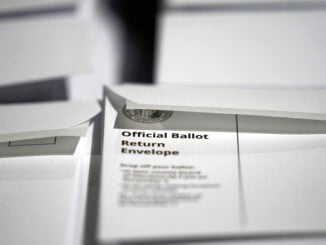My favorite TV show in the 1960s was “The Beverly Hillbillies.” Although silly and hilarious, a recurring theme was what I call “Mr. Drysdale’s Nightmare” which relates to current investment markets.
In the show, yokels Jed Clampett and his mother-in-law Daisy May Moses (Granny) became sudden millionaires and moved from the Ozarks to Beverly Hills where they deposited their fortune in the local Commerce Bank — Milburn Drysdale’s bank. From time to time, and unannounced, Jed and Granny would show up at the bank asking to see their money … they wanted to count it. Mr. Drysdale would fluster and panic.
As a 10-year-old watching the show, I confess to having not understood then what the fuss was about. I sided with Jed and Granny and thought Mr. Drysdale should have showed them their cash.
What financially aware adults understood when watching the show was that banks lend or invest most deposits, keeping just a portion in cash on hand for routine daily withdrawals. In effect, what the Clampetts were doing was causing a “run” on Mr. Drysdale’s bank. In many respects, Mr. Drysdale’s deposit woes are similar to why portions of the global bond markets are so screwy right now with interest rates at rock-bottom levels or, shockingly for trillions of global bonds, in negative territory. That’s right; in Europe depositors increasingly have to pay their banks to hold deposits. Although not a direct analogy, negative interest rates are on par with paying someone to rent your car.
Consider Germany’s Deutsche Bank, one of the most leveraged dark holes of incalculable risk in modern history. With its name all over the 2008 mortgage crisis, the LIBOR scandal of 2015 and numerous other questionable associations, the bank is slowly unwinding. Close to 18,000 employees are being laid off and the stock has traded off some 92% from its high in 2007. Its 1.4€ trillion in assets are backed by a scant market value of its common equity of roughly 14.2€ billion, or a cushion of just 1%.
Rather than face another 2008 meltdown, Germany and the European Central Bank are thus far handling the Deutsche Bank contraction with guarantees and care — helped by super low interest rates. Let’s hope the proverbial Jed and Granny don’t darken Deutsche Bank’s door because one-quarter of the bank’s liabilities are deposits that can be demanded at any time — which in a panic could be problematic.
Beyond Deutsche Bank, Europe worries because they are, generally, not “out of the woods” yet with relation to the 2008 financial crisis. The European Central Bank is trying to promote economic growth with monetary policy while member countries resist sufficient structural economic reforms. An example where labor markets need reconstituting is France where youth unemployment is 20% while the overall rate is 8.7%. Things are worse in Italy, Spain and Greece. By comparison, American labor markets are far more open so our youth unemployment is 8.3% versus our overall 3.7% rate.
Historically, investors could count on signals from the bond market to help guide allocation decisions. Sadly, the degree of central bank meddling among all major economies, including China, USA, Europe and Japan, has created monetary distortions that make no sense unless you are a politician looking for economic growth (and votes) at any cost.
For the time being, a wise investment strategy now might be to seek quality and avoid debt-laden countries and companies. As for Mr. Drysdale, Granny once said of him: “He won’t give me my money! He’s been slippery-footin’ around here like a hog on ice. If you ask me, he ain’t got it.”
Source: FactSet data as of August 6, 2019.
This commentary is for informational purposes only and the opinions expressed herein are those solely of Andrew Burns, an advisor and principal at Hamilton Point Investment Advisors, LLC, in Chapel Hill. This material should not be considered financial advice.


